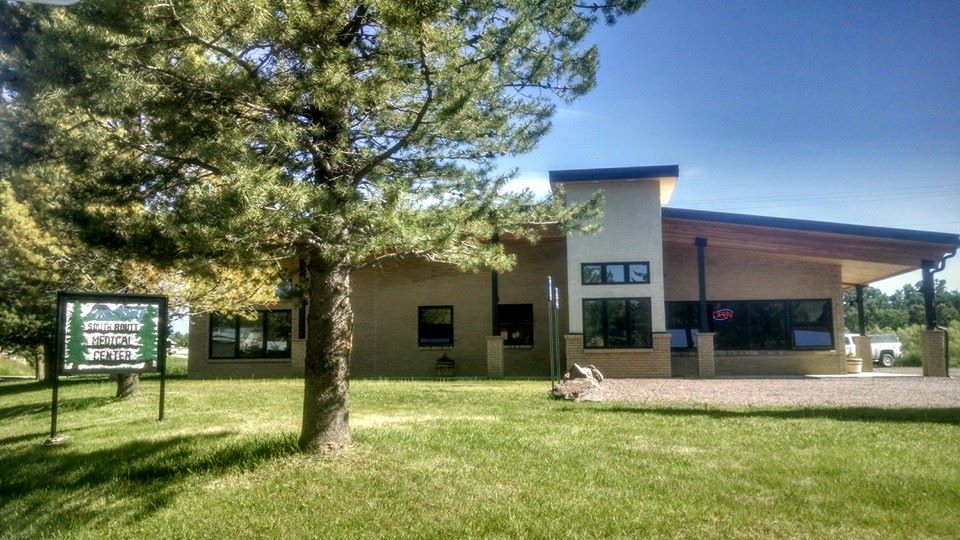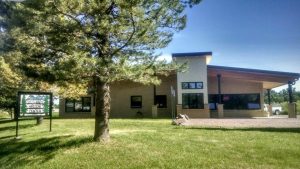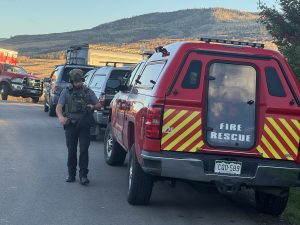South Routt Medical Center asking district voters for tax increase

Courtesy photo
The South Routt Medical Center Health Service District is going to voters in the district to ask for a tax increase to support general operational costs at the busy clinic.
Voters within the district, which follows the boundaries of the South Routt School District, will decide on ballot issue 6A — whether to increase the South Routt Medical Center ad valorem (according to value) property tax rate by 1.305 mills, which would raise the rate from 4.095 to 5.400 mills.
The increase would boost revenue by $175,071 per year starting in 2026. The funds would support the medical center’s operations and core services including primary care, behavioral health, urgent care, lab services and telehealth.
The property tax increase would add approximately $47 annually on the bill for a home valued at $500,000 within the district and approximately $158 annually for a commercial property valued at $1 million, according to Kathryn Schlatter, manager of the health service district and director of the South Routt Medical Foundation.
Five well-known southern Routt County residents are assisting as private citizens in a personal capacity through the group Friends of South Routt Medical Center, which is leading support for the tax measure, including Mary Alice Page-Allen, Nikki Knoebel, Angelica Salinas, Ken Rogers (former resident and director) and Tim Corrigan.
A statement from the community election campaign committee noted the tax increase “matters for our community” to provide local access to health care such as family medicine, women’s health, pediatrics, lab services and foot care.
“Like many rural facilities across Colorado, SRMC operates in a medically underserved region where limited provider availability and higher per-patient costs make sustainability challenging,” according to the committee statement.
“Founded as a grassroots community effort, SRMC has grown from a small rural clinic into a trusted regional health care hub serving nearly 8,000 patients today, up from just 2,800 in 2014. The center’s success reflects a decades-long commitment from local residents, staff and leaders who believed that access to quality care should not depend on geography,” it added.
The medical center also serves as a community safety net by accepting patients regardless of their ability to pay and provides financial assistance when needed. The center space serves additional patients with dental appointments through Northwest Colorado Health and physical therapy services through UCHealth.
The committee statement noted if the ballot measure fails and no additional operational funding can be secured, the center located along Main Street in Oak Creek may need to cut or eliminate programs such as foot care, women’s health, behavioral health, lab or telehealth services.
“Staffing reductions could force longer wait times or reduced capacity, pushing patients to travel farther, often in harsh weather, for care,” the statement noted. “Preventive care and chronic disease management would suffer, with potential downstream impacts on emergency care and overall community health.”
The committee statement noted that reductions in reimbursement rates are “severely impacting the medical center.” For example, in September, patient services were up 18% compared to September 2024, but net revenue was down 25%.
As a district employee Schlatter is not allowed to participate in campaigning, but she provided factual information upon request.
“The last mill levy increase in 2016 helped stabilize operations and maintain core services at a time when many rural clinics were closing,” Schlatter said.
“Since 2016, costs for insurance, supplies and utilities have continued to rise, while reimbursement rates from Medicare, Medicaid and private insurers have not kept pace,” Schlatter said. “According to the Colorado Rural Health Center, many rural health districts across the state face similar financial and staffing pressures due to smaller populations, higher operating costs and limited reimbursement rates compared to urban areas.”
Schlatter said the 3,322-square-foot medical center plans to undergo a new, small expansion and remodel project for which $3.6 million in state and federal grants have been secured.
The expansion project includes an additional 832 square feet of new construction, renovation of approximately 2,898 square feet of existing space, paving of the parking lot and upgrading the ventilation systems, Schlatter said.
“The project remains in the building program and design phase, and final plans and approvals have not yet been completed,” Schlatter noted.
“No local taxpayer dollars will be used for the expansion or remodel,” Schlatter explained. “These projects are fully funded through secured grants as part of Colorado’s Tier One Coal Transition initiative to strengthen the regional economy following coal industry closures.”
Schlatter addressed potential disadvantages if the tax increase measure passes including increases in property taxes for homeowners and businesses with commercial properties seeing higher proportional increases.
Committee member Salinas said “we have not heard of any formal opposition,” and no formal “con” statements were submitted for the Routt County Clerk notice of election booklet.
To reach Suzie Romig, call 970-871-4205 or email sromig@SteamboatPilot.com.

Support Local Journalism

Support Local Journalism
Readers around Steamboat and Routt County make the Steamboat Pilot & Today’s work possible. Your financial contribution supports our efforts to deliver quality, locally relevant journalism.
Now more than ever, your support is critical to help us keep our community informed about the evolving coronavirus pandemic and the impact it is having locally. Every contribution, however large or small, will make a difference.
Each donation will be used exclusively for the development and creation of increased news coverage.










